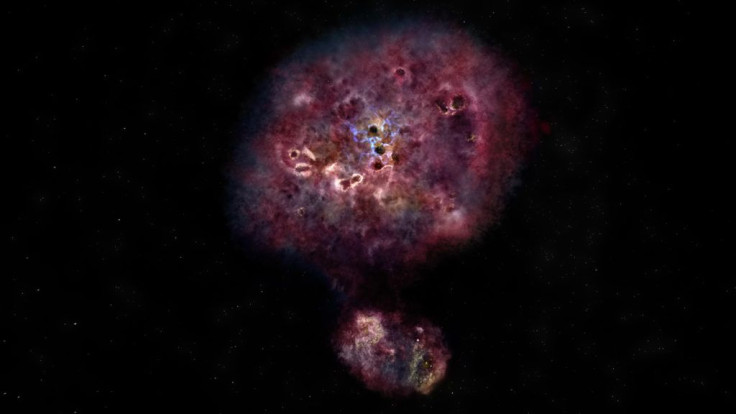Astronomers Discover Old Dusty Galaxy With Intense Star Nursery

KEY POINTS
- Astronomers discover a dusty galaxy using the ALMA telescopes
- The galaxy has very active star-forming regions
- The light from the galaxy traveled for 13 billion years before reaching Earth
A team of astronomers was able to successfully track down the location of a monster galaxy that’s rich in star formations. According to their study, this is one of the oldest star-forming galaxies in the universe.
The galaxy has been identified as MAMBO-9. Based on the astronomers’ observations, MAMBO-9 is a dusty galaxy, which greatly contributes to its intense stellar nurseries.
“The total mass of gas and dust in the galaxy is enormous: ten times more than all the stars in the Milky Way,” the study’s lead author Caitlin Casey of the University of Texas at Austin said in a statement. “This means that it has yet to build most of its stars.”
Usually, galaxies like MAMBO-9 are difficult to detect because the light they emit is hidden behind their massive clouds of dust and gas. The first time light traces from MAMBO-9 were detected occurred 10 years ago. The light traces were spotted by the study’s co-author Manuel Aravena using the Max-Planck Millimeter Bolometer instrument.
Unfortunately, Aravena’s observations were not clear enough to reveal the location of the galaxy. Recently, through a series of powerful radio telescopes known as the Atacama Large Millimeter/submillimeter Array (ALMA) in Chile, the astronomers were able to clearly detect the light emitted by MAMBO-9.
According to the astronomers, the light from the galaxy traveled for 13 billion years before it reached ALMA’s antennas on Earth. This means that the data collected by the astronomers from the galaxy came from its past. In its present condition, the astronomers theorized that the galaxy could be even more massive with hundreds of new star formations.
This marked the first time that a distance massive galaxy was spotted without the use of gravitational lensing, which occurs when the light emitted by a cosmic object gets bent by the gravity of another massive object in space. This means that the light gets distorted as it gets affected by gravitational forces.
“We found the galaxy in a new ALMA survey specifically designed to identify dusty star-forming galaxies in the early universe,” Casey explained. “And what is special about this observation, is that this is the most distant dusty galaxy we have ever seen in an unobstructed way.”
The findings of the astronomers were presented in a new study published in The Astrophysical Journal.
© Copyright IBTimes 2024. All rights reserved.





















